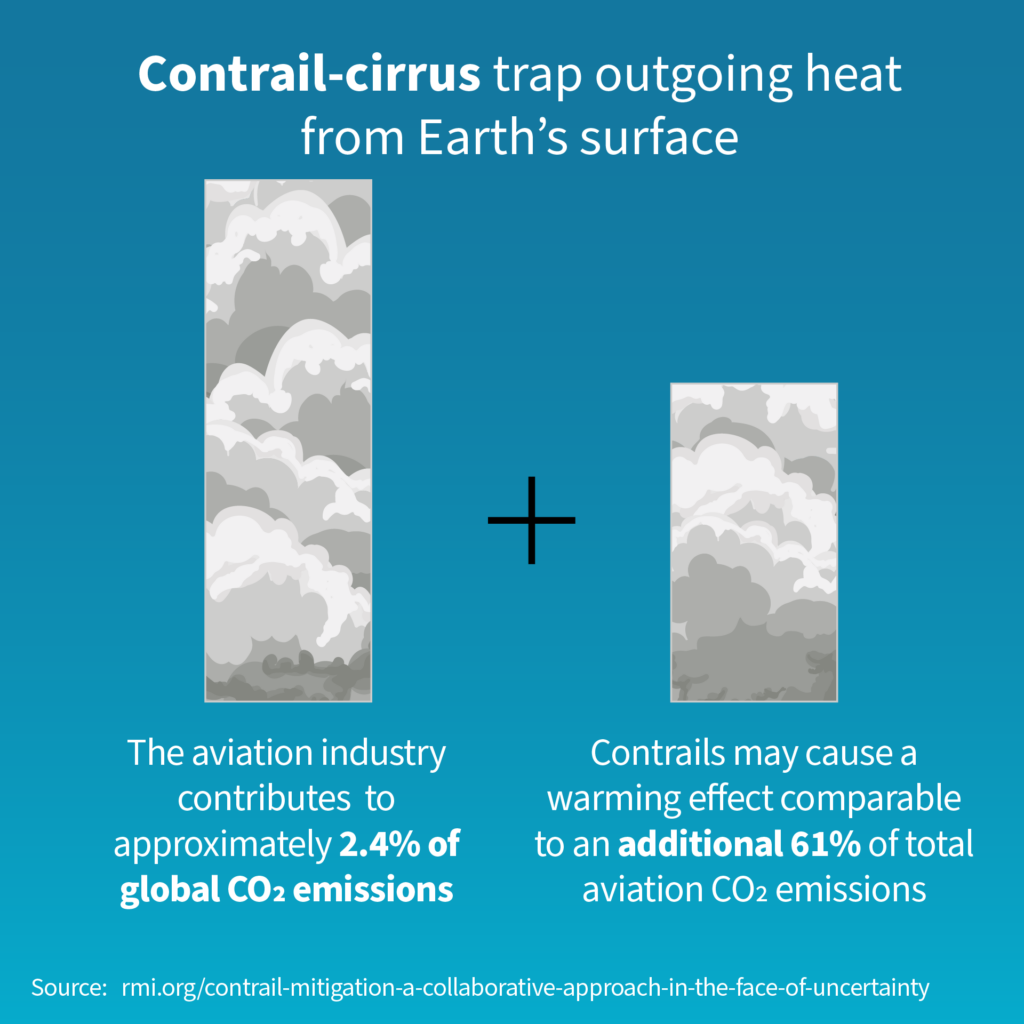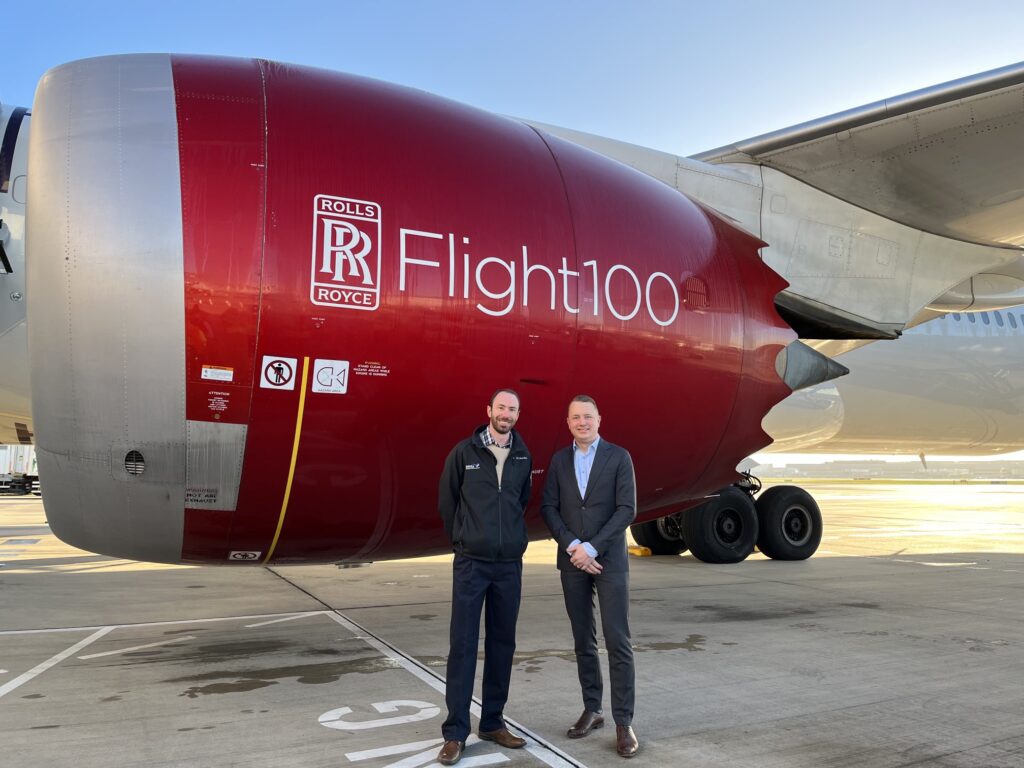
Contrail Mitigation: A Milestone Year for Advancing Industry Understanding and Experience
Contrail mitigation flight trials and discussions over 2023 have helped to advance industry understanding of the potential solutions available and the improvements needed for future scaling
Forecasting what the future has in store is challenging work. In the world of aviation, the same can be said for predicting and verifying where and when contrails may form. However, 2023 marks a turning point for the aviation industry in its attention toward addressing the climate impact of contrails by learning about and trialing novel solutions. In November 2022, RMI launched the cross-sector Contrail Impact Task Force alongside 10 founding participating organizations. As 2023 comes to a close, the task force is now represented by over 50 organizations including technology developers, academic institutions, air service providers, aircraft and engine manufacturers, industry associations, and policy makers.
Exhibit 1: How contrails may contribute a net warming effect, trapping outgoing heat from the Earth’s surface
Source: Google Research, Climate, 2022. Calculations adapted from D. S. Lee et al., Atmospheric Environment 244 (2021), 117834; and G. Myhre et al. in AR5, 2013
With funding support from Virgin Unite, Alaska Airlines, and philanthropist Chris Kohlhardt, RMI’s Contrail Impact Task Force brings together leading experts to share the latest research and trial experiences to advance the conversation on what is needed to integrate potential contrail mitigation solutions into everyday operations. As industry engagement continues to grow, so do trial mitigation activities. In January of last year, Delta Air Lines presented on their collaboration with MIT to conduct a series of contrail mitigation flight trials and became the first airline to set warming contrail reduction targets as part of their sustainability goals. Separately, Google, American Airlines, and Breakthrough Energy worked together to test AI based contrail predictions and open-source prediction models. They conducted a trial of 70 test flights over a six-month period, making small altitude adjustments to 35 flights to avoid contrails. This led to a statistically-significant 54 percent reduction in contrail formation in the rerouted flights, using 2 percent more fuel – and CO2 emissions – than the controlled flights. These insights were shared in detail at the third quarter Contrail Impact Task Force meeting, helping to inspire researchers to improve contrail prediction models and the industry to embark on additional collaborations.
RMI’s Joey Cathcart and Thomas Koch Blank ahead of Virgin Atlantic’s Flight 100 in November.
Another industry-inspiring collaboration came to fruition on November 28th when Virgin Atlantic became the first commercial airline to demonstrate the use of 100 percent sustainable aviation fuel on a transatlantic route with Flight 100. Not only did this historic flight advance the aviation industry’s ability to address the carbon challenge, but it also helped to advance non-CO2 research conducted by Imperial College London on the impact of SAF on contrail formation as well as the use of post-flight satellite analysis for prediction model verification. Additionally, Virgin Atlantic — in consultation with RMI — developed and applied an innovative in-flight contrail observation reporting process during Flight 100 to help verify prediction models. This technique is quickly proving to be easily applied, helping to improve contrail prediction modeling accuracy and thereby enabling increased confidence in the application of contrail mitigation actions.
Although activities and discussions in 2023 have helped to improve industry understanding of the climate impact of contrails and the potential solutions available to address them — two key goals of the Contrail Impact Task Force — additional research, technical developments, flight trials, and processes are needed before contrail mitigation can be integrated at scale with confidence. Additional resources are needed to guide the industry. In response, RMI is coordinating with task force stakeholders to develop a comprehensive report that can support the industry in advancing the application of contrail mitigation. To do so, a variety of critical questions need to be addressed such as:
- What additional research is still needed to better understand the climate impact of contrails?
- What metrics and processes should be used to monitor, report, and verify the climate impact of contrails?
- What tools are available/in development to predict and validate contrail formation? What techniques are available to improve these tools?
- How much does it cost to integrate contrail mitigation tools into existing systems and what are the operational costs?
- What potential incentives and policy measures may be needed to support contrail mitigation?
To move from trial-level application of contrail mitigation to system-wide integration, these questions and more must be addressed through additional technical developments and scientific research. Notably, with the European Union’s call to establish a monitoring, reporting, and verification framework for non-CO2 effects in aviation by January 2025, the aviation industry needs to understand the contrail mitigation landscape as it exists today as well as what it may look like in the near future. While we may not have a crystal ball, the signs are positive after a historic year advancing contrail mitigation, and the huge opportunity to address the climate impact of contrails in the years ahead is becoming less cloudy.

